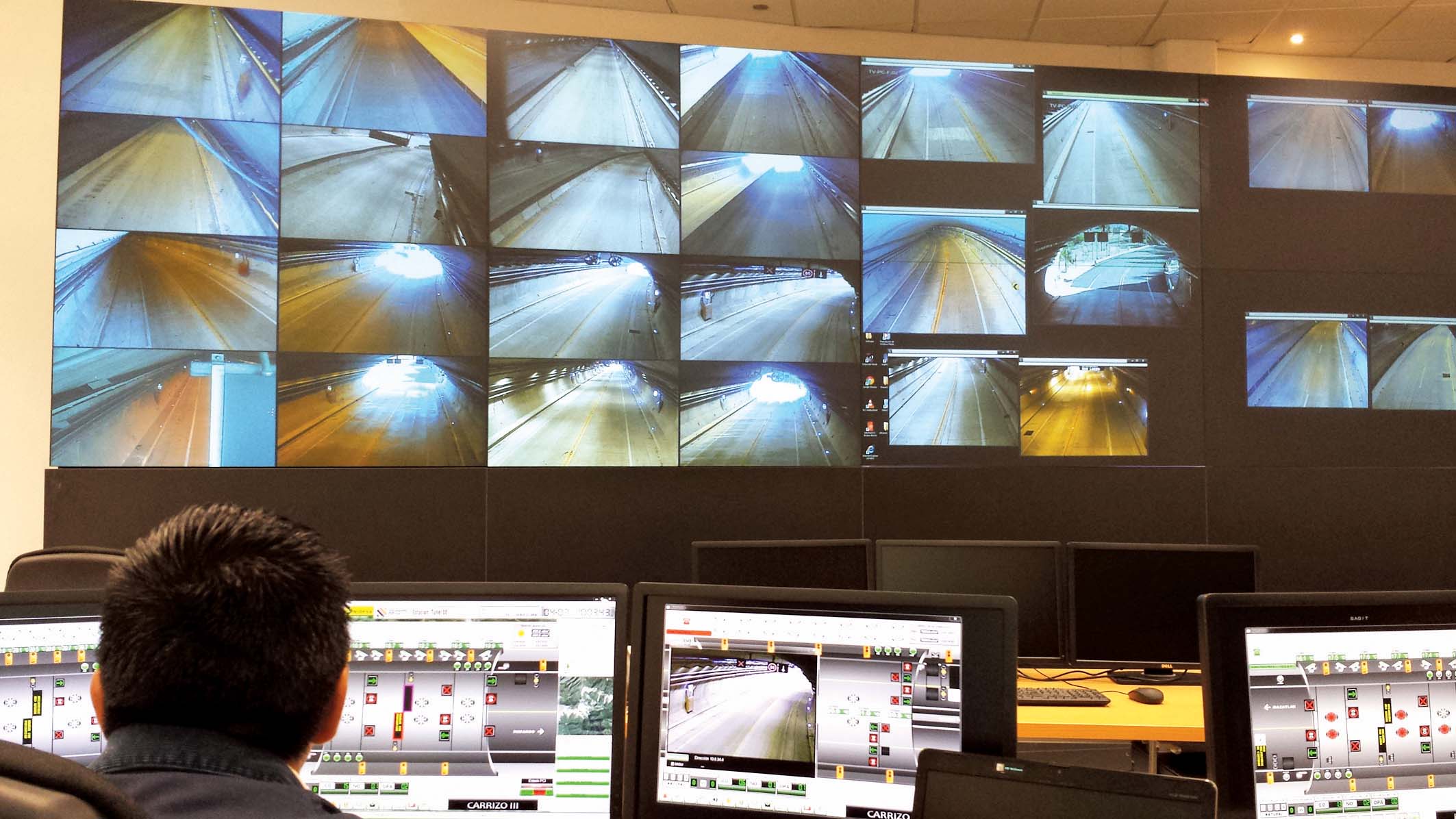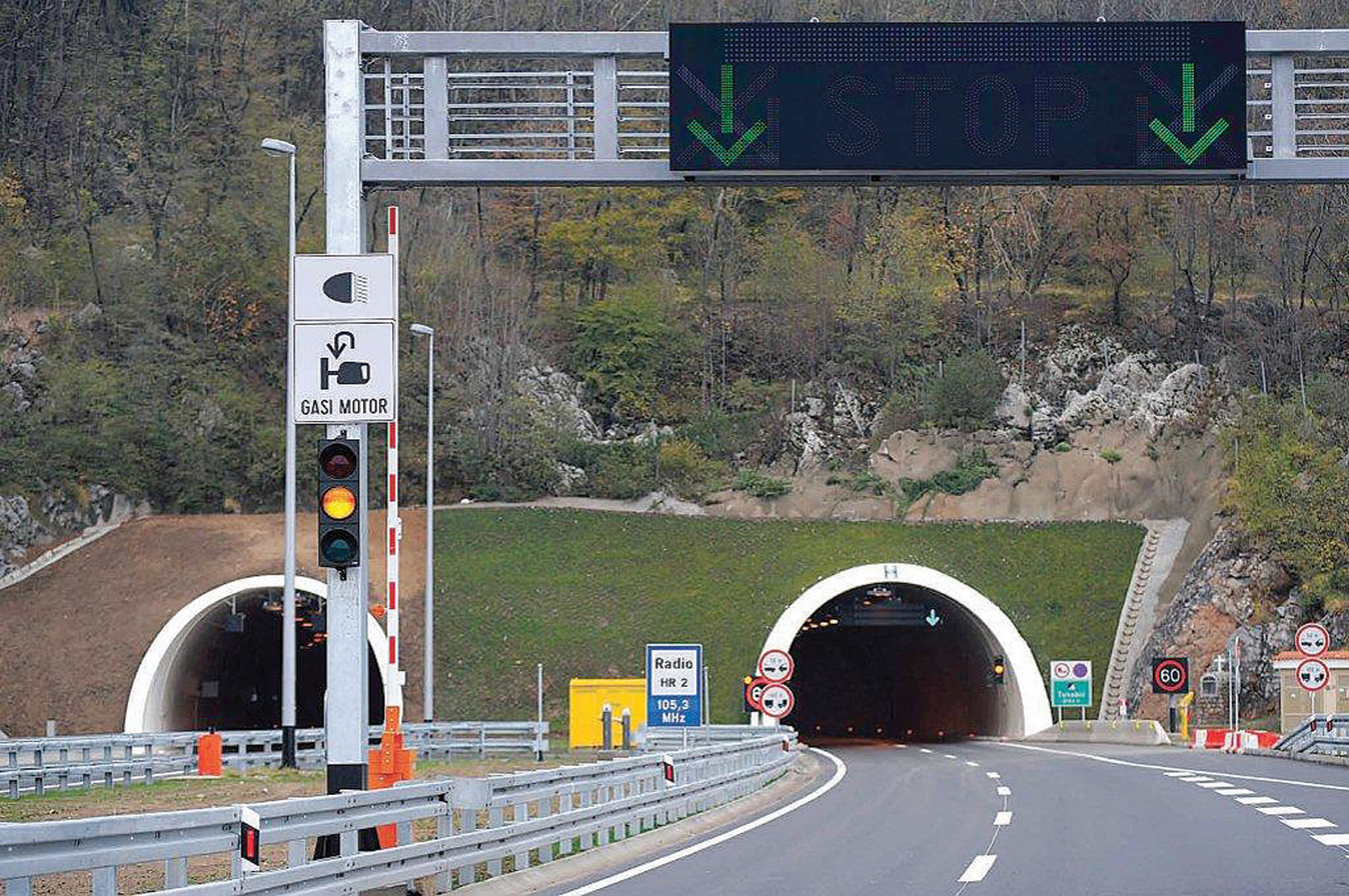
Mauro Nogarin looks at the management of the longer tunnels on Mexico’s Durango-Mazatlan highway.
In recent years the National Infrastructure Fund of Mexico has increased investment in the installation of ITS systems on selected highways to increase road safety. One such major investment is the 230km long Durango-Mazatlan highway which is 12m in width and has an average speed of 110km/h. This major route forms part of the backbone Matamoros-Mazatlan superhighway on which construction started in 2006.
It opened in April 2014. Currently it carries around 2,200 vehicles per day of which trucks represent about 35%.
The 120km section equipped with ITS systems was finished between 2011 and 2014 from kilometric points 110 and 230. This section runs through particularly difficult terrain and contains several viaducts, overpasses and bridges, including the 1.1km long Baluarte Bridge (which spans a 402m deep canyon and has supports of up to 148m in height). There are 61 tunnels in this section, nine of which are over 400m long and have been fitted with various ITS instrumentation. This is the most intensive concentration of instrumented tunnels in Mexico.
The Mexican authorities are drafting domestic tunnel safety regulations and recommendations based on those of the EU in order to normalise all the installations.
The nine tunnels
Tunnels operated by the Coscomate control centre:
Piedra Colorada 486m
Tortuga Nuevo 829m
Picachos I 426m
Papayito III 783m
Baluarte 574m
Tunnels operated by the Santa Lucia control centre:
El Varal 777m
Carrizo II 438m
Carrizo III 424m
El Sinaloense 2,786m
Source: HK
Totalling some 80km in length, this series of tunnels cross the Sierra Madre Occidental and are amongst the most important in Mexico.
There 49 machine houses supplying power for the tunnel network, and two dedicated control centres: St. Lucia and Coscomate. The Durango-Mazatlán highway is part of the Secretariat of Communications and Transportation of Mexico and is managed by the National Infrastructure Fund as the tunnel manager. It is operated by Federal Roads and Bridges, with monitoring systems provided by international engineering and construction company SenerMex and Hala Ken Consulting.
The first consideration is to prevent drivers being ‘blinded’ when entering into or emerging from the longer tunnels so the lighting inside the tunnels’ entrance and exit have four settings: sunny, cloudy, twilight and night. These are activated according to a luminance meter (luminacemetre) installed in the tunnel mouths to minimise the difference in luminance preventing both deep shadow and dazzle. At night the tungsten exterior tunnel lighting is activated by photocells.
The ventilation system consists of groups of fans along certain sections within the tunnel, which in normal conditions acts to remove contaminated air from the tunnel or smoke and fumes in the event of an emergency. This system works in conjunction with both the fire detection system and ventilation control.
Each of the smart tunnels has a pump house in one of the entrances where the pumps and drivers for the fire protection system are located. The piping system leaves the pump house and enters the tunnel from each side, covering the entire length of the tunnel to feed the hydrants located inside the emergency cabinet at the SOS post. The SOS posts are installed every 50m inside the tunnel and at the entrances to the escape gallery. The cabinets also contain a fire extinguisher and an emergency telephone. There are SOS posts every 2.5km on the outside of the nine tunnels.
An additional fire hydrant exclusively for firefighters is installed at each of the tunnel entrances. Backup energy systems include mechanical equipment in case of power failure. This uses a flywheel-powered emergency generation system which, when activated, provides electricity in the tunnel while ensuring there is no power interruption.
The systems installed within smart tunnels have air quality monitors, opacimeters, CO and NO2 sensors and anemometers linked to the ventilation control to maintain the air quality inside the tunnel. This is the only fully automated system in the tunnels and automatically starts the fans when the pollution level hits the trigger point.
To monitor the longer tunnels there are fixed cameras every 100m and PTZ cameras in each escape gallery (approximately 300m apart and constantly monitored) while there at the entrance/exit of the longer tunnels is an additional camera for real-time monitoring of the traffic within the tunnel. The fixed cameras contain analytical system video (DAI system) which automatically detects incidents, slow-moving and stationary vehicles, wrong-way drivers and pedestrians.
In the event of an incident or emergency a series of speakers installed along the tunnel and in the escape galleries enable control centre staff to send messages to the travelling public. At the same time information from the data collection stations and cameras located at each tunnel entrance can provide information on the numbers of vehicles inside the tunnels, their direction and classification to assist tunnel management and first responders.
Weather conditions on the highway are monitored by a series of weather stations containing smoke meters, thermometers, rain gauges, anemometers and other sensors. Some of these stations are located at the tunnels’ entrances as the area has a propensity for fog and help alert drivers to low visibility ahead.
In order to keep drivers informed variable message panels (each with three lines of 12 characters or one pictogram) are located at the entrances to the nine tunnels. Inside the tunnels smaller signs have two lines of eight characters.
There are also red-X and Arrow signs to communicate to drivers the state of each lane. The traffic management system also includes speed limit signs, traffic lights for access control and barriers at the entrances.
A tunnel radio system equipped with a heating cable is installed for communication with the emergency services.
The distributed control system collects and stores data obtained in the field which is then fed to the supervisory control and data acquisition (SCADA) software installed in control centres. The operators are responsible for activating alarms, triggering emergency protocols, changing speed limits and controlling the variable signs.
Each tunnel has a network of redundant local fibre optics plus a second fibre optic network connecting the tunnel systems with the similarly redundant control centres. The communications architecture between smart tunnels allows redundancy. This enables the continued operation of the whole system in the event of a single fibre being severed or the failure of a communications link.
For monitoring, operation and controlling the tunnel and its systems, both of the centres have a SCADA system installed by Madrid-based construction company Aldesa. The system displays a diagram of each tunnel and an image of each piece of equipment installed, allowing the operator to monitor and generate action on each of these.
Five operators work in each of the main control centres and they have three monitors, plus a video wall with 70" rear projection modules.
In addition, each of the smart tunnels has a local control centre, with two terminals and a pair of operation screens for monitoring cameras. Every control centre has equipment and trained emergency response personnel. To date, the emergencies dealt with have been landslides blocking tunnel entrances and minor accidents. A practice drill involving the tunnels’ operators and supervisory agency and the full range of emergency services in the states of Durango and Sinaloa is held annually.
About the author: Mauro Nogarin is a freelance journalist based in Bolivia and specialising in the IT and energy related sectors.











